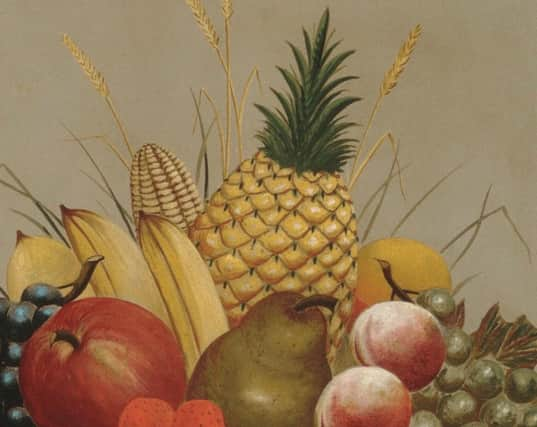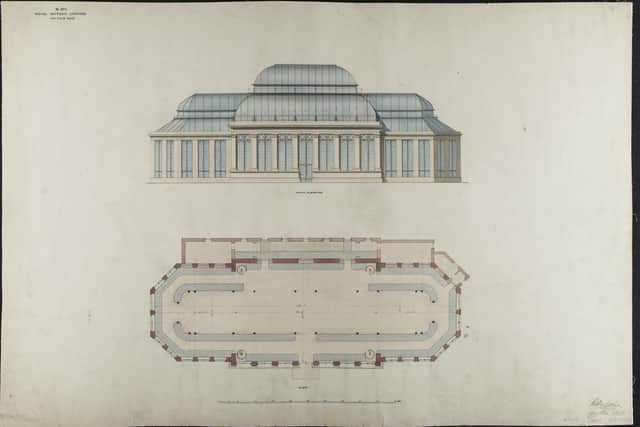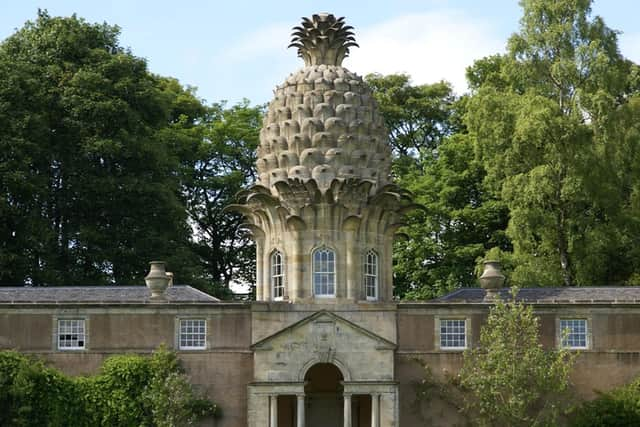When Scotland went bananas for the pineapple


The pineapple became the fruit of the moment in Scotland from the mid-18th Century with a wave of horticultural ingenuity allowing them to be grown in our cold climate against all the odds.
Jessica Evershed, outreach and learning archivist at National Records of Scotland, has recently researched how the craze for exotic fruits was fully embraced in the gardens of Scotland’s wealthy.
Advertisement
Hide AdAdvertisement
Hide AdShe said the ability to travel across Europe from the mid-17th Century led to an appetite for plants and fruits from warmer climes to be grown in the gardens of home.


This came at a time when the prospering upper and middle classes of mid-17th century Scotland began to invest heavily in their houses and gardens, with enterprising Scots seeking new ways of growing something a little more exotic, Ms Evershed said.
The walled garden was a technique of choice and sheltered plants from poor weather. Walls absorbed heat from the sun during the day, with trees and shrubs usually planted against the southern face of the enclosure.
But it was the invention of the ‘hot house’ that allowed pineapple production to really bloom in Scotland, with the fruit soon becoming a fashionable commodity for the rich.
Ms Evershed said: “Regarded as a symbol of prosperity, presumably because the fruit was scarce and expensive to buy – late 17th century prices recorded pineapples costing 8 shillings per pound or £45 in today's money – having a pineapple at the centre of the dining table was an opportunity to communicate social standing to invited guests.


“Pineapples had been successfully grown in mainland Europe from the late 16th century onwards, but it took the invention of the hot house in the second half of the 17th century for mass pineapple cultivation in Scotland to become possible.
"The first pineapple propagated in Scotland is attributed to James Justice in 1728. Justice was a principal clerk of the Court of Session, but his passion for gardening resulted in a ‘garden paradise’ created at Crighton House, just south of Edinburgh. Justice was an innovator of growing methods of pineapples or ‘ananas’, designing a pineapple stove for forcing the fruit.”
Ms Evershed added that Justice shared his plan for the stove and other horticultural experiments in his publication 'The Scots Gardiners Director’ (1754) and also wrote further works on gardening in Britain.
Advertisement
Hide AdAdvertisement
Hide AdJustice was considered the father of Scottish gardening but his spending on his ‘hobby’ outweighed his income, and he acquired great debts. At the time of his death in 1763, Justice’s gardening accomplice, William Boucher, of Comely Garden, near Holyrood, was called upon to value Justice’s garden.
Ms Evershed said that the cultivation of pineapples “developed rapidly” in 19th Century Scotland with the introduction of hot water heating systems and the invention of sheet glass allowing for the construction of large glass houses which could accommodate thousands of fruits.
She added: “An example can be seen today at Edinburgh’s Royal Botanical Gardens. The Temperate Palm House built in 1858, is the tallest Palm House in Britain at a height of 21.95m. Alongside the pineapples, a variety of plants were grown here, including banana, figs and sugar cane.
“Pineapples were displayed at exhibitions up until the early 1900s. However, cultivating the fruit on home soil dwindled, as canned imports were readily available and a cheaper alternative than the time consuming and expensive process of growing the fruit on home soil. The legacy of Scotland’s love affair with the pineapple can still be seen at Dunmore, Stirlingshire the seat of John Murray, Earl of Dunmore.
"This site was part of the kitchen garden and includes a sizeable stone monument to the ‘King of Fruits’ which still amazes visitors today.”
A message from the Editor:Thank you for reading this story on our website. While I have your attention, I also have an important request to make of you.With the coronavirus lockdown having a major impact on many of our advertisers - and consequently the revenue we receive - we are more reliant than ever on you taking out a digital subscription.Subscribe to scotsman.com and enjoy unlimited access to Scottish news and information online and on our app. With a digital subscription, you can read more than 5 articles, see fewer ads, enjoy faster load times, and get access to exclusive newsletters and content. Visit https://www.scotsman.com/subscriptions now to sign up.
Our journalism costs money and we rely on advertising, print and digital revenues to help to support them. By supporting us, we are able to support you in providing trusted, fact-checked content for this website.
Joy Yates
Editorial Director
A message from the Editor:Thank you for reading this story on our website. While I have your attention, I also have an important request to make of you.With the coronavirus lockdown having a major impact on many of our advertisers - and consequently the revenue we receive - we are more reliant than ever on you taking out a digital subscription.Subscribe to scotsman.com and enjoy unlimited access to Scottish news and information online and on our app. With a digital subscription, you can read more than 5 articles, see fewer ads, enjoy faster load times, and get access to exclusive newsletters and content. Visit https://www.scotsman.com/subscriptions now to sign up.
Advertisement
Hide AdAdvertisement
Hide AdOur journalism costs money and we rely on advertising, print and digital revenues to help to support them. By supporting us, we are able to support you in providing trusted, fact-checked content for this website.
Joy Yates
Editorial Director